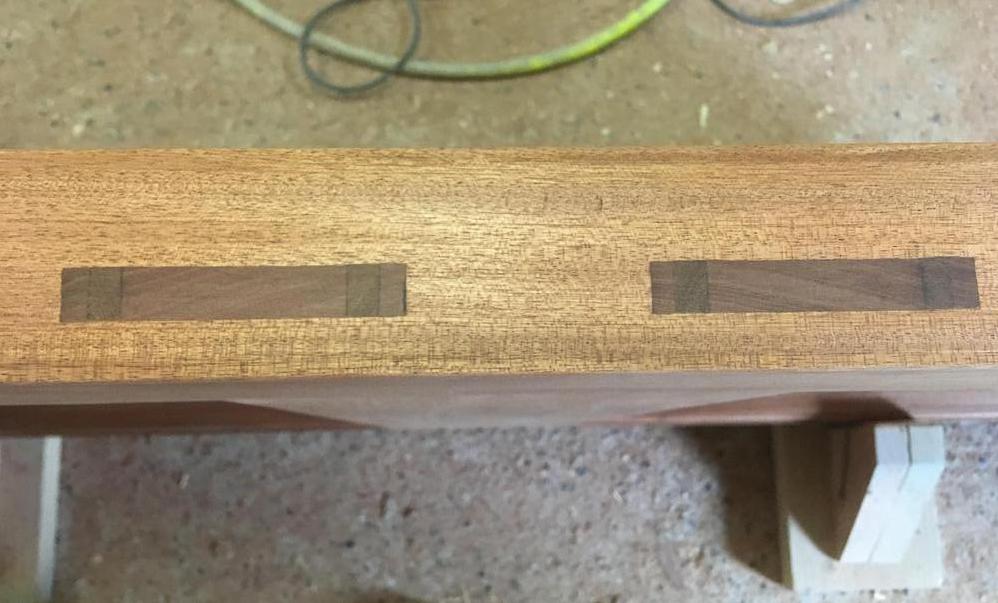Trevanion
Greatest Of All Time
I was having a discussion with a friend who is also a fellow joiner the other day and one of the topics that cropped up was door tenons and how they should be wedged. His joinery has wedge space cut into the stiles and then the wedges were hammered into this space compressing both the stile and the tenon. My joinery has wedge space cut into the stiles but then I also cut a narrow slot on the bandsaw into my tenons for the wedges to go into to splay the tenon out like a dovetail. He argued that doing it my way could introduce cracks into the rails by the splitting action of the wedges, which is a fair enough point. I argued he was just a lazy git and didn't feel like cutting the slots :lol:

I've seen quite a lot of joinery done both ways (Worst I saw was blind mortices and tenons that were face nailed with an 18GA nailer to hold them while the glue went off, shocking from a company charging 2X as much as everyone else). I don't think there's any specific method that's better than the other, I've glanced in both Cassells Carpentry and Joinery and Modern Practical Joinery but can't really find anything specific on it. but I'd be interested in what the hive-mind thinks.

I've seen quite a lot of joinery done both ways (Worst I saw was blind mortices and tenons that were face nailed with an 18GA nailer to hold them while the glue went off, shocking from a company charging 2X as much as everyone else). I don't think there's any specific method that's better than the other, I've glanced in both Cassells Carpentry and Joinery and Modern Practical Joinery but can't really find anything specific on it. but I'd be interested in what the hive-mind thinks.

































